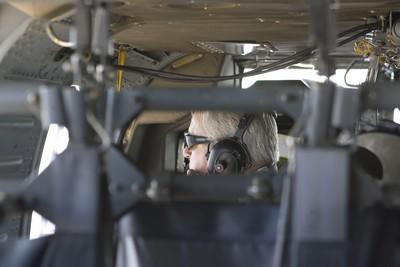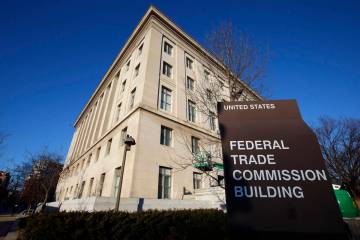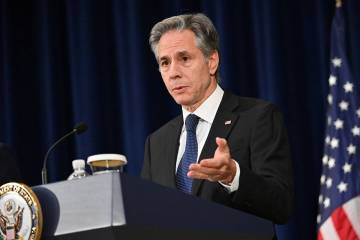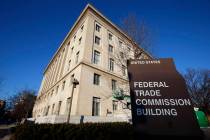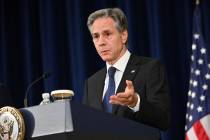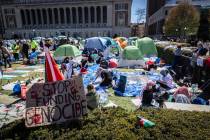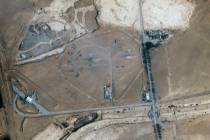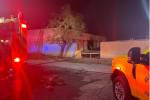Fire preparedness level raised
BOISE, Idaho -- Cooler weather and calmer winds helped firefighters make some progress on dozens of wildfires burning in the bone-dry West, including one that forced a tiny southwest Idaho town to evacuate on Thursday.
The break wasn't expected to last long. Dry, windy weather and temperatures above 100 degrees were forecast for the next seven days.
A blaze that burned nearly 200 square miles near the Nevada state line threatened the town of Murphy Hot Springs and its 50 homes, said Brock Astle with the U.S. Bureau of Land Management.
Residents were told to leave because of fear they wouldn't have a way to escape if the fire spread, similar to the evacuation of the small town of Jarbidge, nestled in a tight canyon near the Idaho line.
"The bottom line is, if the fire goes into the canyon, the likelihood that it can be stopped is slim to none," Elko County Sheriff Dale Lotspeich said.
Crews managed to contain a fire that has burned more than seven square miles near the Idaho National Laboratory, U.S. Department of Energy officials said.
"Over the last four days we've had over 1,400 new fires start" around the West, said Ken Frederick of the Boise-based National Interagency Fire Center. Though many of the fires were caught and contained while they were still small, a number of them have grown substantially, he said.
The Bureau of Land Management put Nevada on the top of its priority list.
The federal designation brought in resources from neighboring states to assist firefighters, who acknowledged they were stretched thin by the blazes that stretch across most of the northern third of Nevada.
Firefighters were getting a handle on a wildfire that had threatened hundreds of homes on the edge of Reno. It was about 15 percent contained and some of the 600 firefighters on scene were being dispatched to other fires.
The nation's firefighting preparedness was raised to its higher level, allowing fire managers to request help from international crews, although Frederick said none had been requested so far.
In Northern California, overnight downpours helped crews battling nine fires burning about 17 square miles near the Oregon border, where flames came within a half-mile of more than 300 homes in and around Happy Camp.
The largest wildfire in Oregon, near Riley, had grown to more than 211 square miles and was threatening a handful of homes, officials said.
Utah was so dry that some communities banned traditional July 24 fireworks that members of the Church of Jesus Christ of Latter-day Saints normally shoot off to celebrate the 1847 arrival of Mormon pioneers in the Salt Lake Valley.
Wildfires forced Zion National Park in Utah to close the backcountry to hiking, climbing and rappelling Thursday.
The Dakota Hill fires are "posing threats to most of Zion's backcountry areas and the safety of visitors," the park said.
The West had been at level four for only a few weeks when officials decided to raise it to level five, effective Thursday.
"It's driven by a couple of things: The number of large fires we have, and also the fires are occurring in several states and in several geographic areas," said Randy Eardley, a spokesman for the National Interagency Fire Center. "The resources we have are being stretched thin."
The change allows fire managers to request help from international crews, and National Guard units could be mobilized. On Thursday, fire center spokesman Ken Frederick said new crews were arriving in the Pacific Northwest from Alaska and the Southeast.
Firefighters in the area critically need medium-sized helicopters, he said. With 23 uncontained large fires or fire complexes in Nevada, Utah and Idaho, there aren't enough contractor-supplied helicopters to go around, he said.
About 15,000 U.S. firefighters were already battling nearly 70 fires bigger than 100 acres in 12 states.
A top BLM official planned to travel from Washington, D.C., today to tour some of the burned areas.
"There is no higher priority than protecting people and resources during the fire season," said Henri Bisson, BLM deputy director for operations.
"I want to review the on-the-ground conditions to make sure we're doing everything possible to meet those objectives," he said.
The Rowland fire was estimated at 183,000 acres, roughly 285 square miles, according to the Elko Interagency Dispatch Center.
"There still remains a threat to the area," state regional forester Tom Turk said.
Thanks to the federal designation, Nevada has received since Wednesday:
• Ten Type 2 fire crews, each with 200 or more firefighters per crew, from New Mexico and Arizona
• Three medium helicopters from Southern California
• Three airtankers from Northern California
• One lead plane from Northern California.
• One Type 1 fire crew with more than 500 firefighters from various locations
• 50 fire engines
"That's just what has been ordered and delivered in the last 24 hours to Nevada," said Doug Shinn, assistant manager at the National Interagency Coordination Center in Boise, Idaho. "We expect more to be ordered and more to be supplied."
Gov. Jim Gibbons, who declared a state of emergency late Wednesday, was touring fires in the Elko area Thursday.
"The unprecedented fire suppression costs will impact both state and local government, and we are ready to take the next step toward attaining a federal declaration of emergency if need be," Gibbons said in a written statement.
One of Nevada's larger fires, the 65-square-mile Hepworth Complex in Elko County, consists of the 36,000-acre Hepworth fire some 10 miles northwest of Wells and the 6,000-acre Stevens Fire about 20 miles west of Wells. The Hepworth fire was estimated at 20 percent contained and the Stevens fire was estimated at 50 percent contained.
The 20-square-mile Winecup Complex consists of the 9,700-acre HD Summit fire about 20 miles northeast of Wells and the 5,800-acre Scott Creek fire burning 12 miles west of Jackpot.



